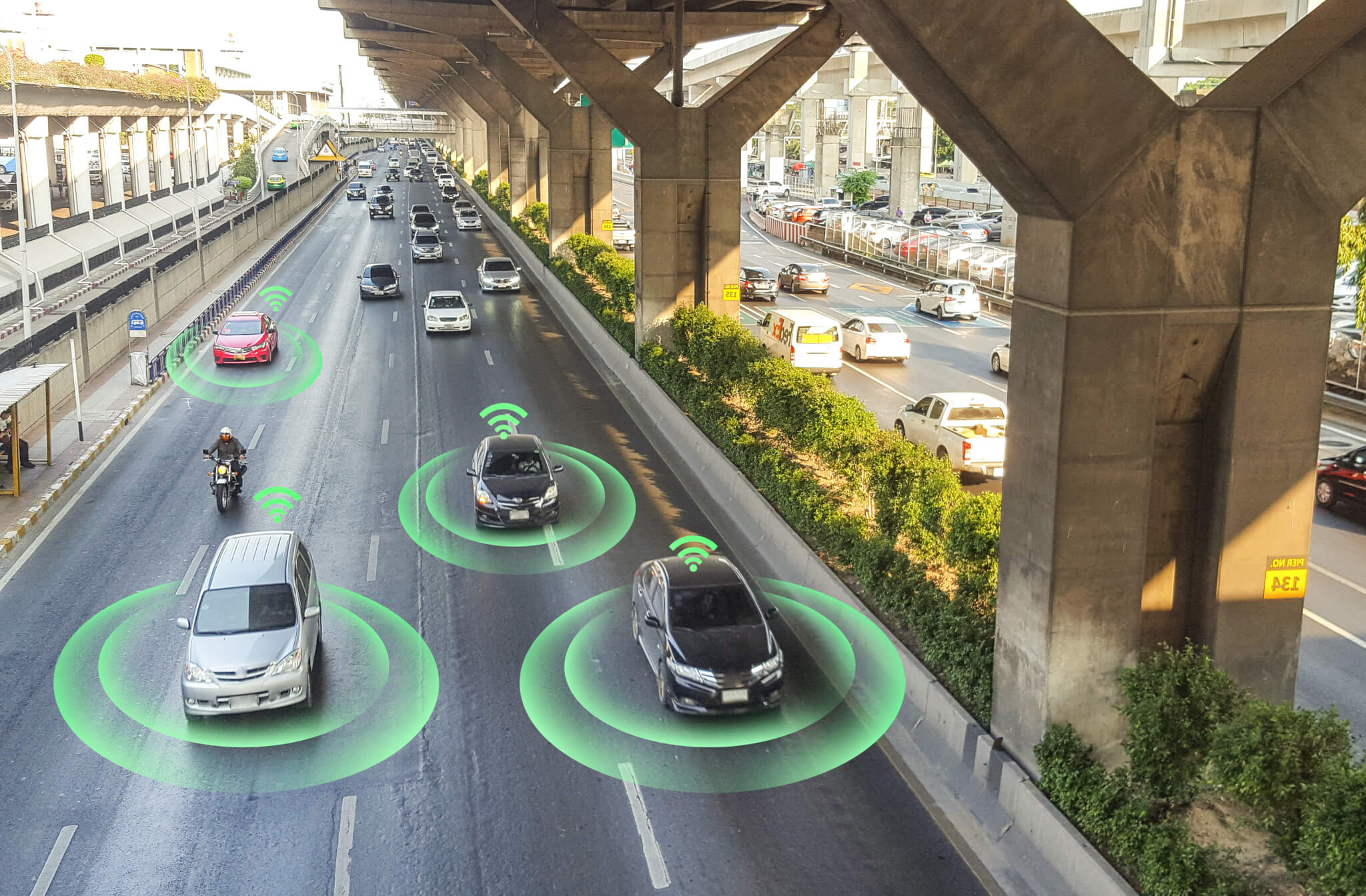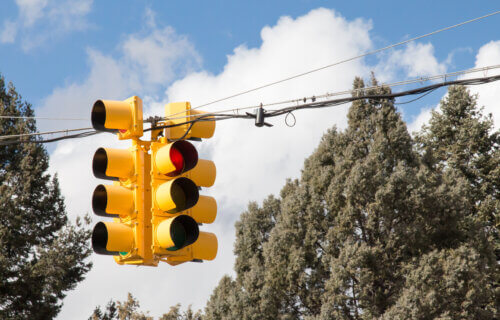🔑 Key Findings:
- Researchers believe adding a white light can ease street congestion.
- The light would allow self-driving cars to coordinate traffic flow.
- A white signal would tell real drivers to follow the car in front of them.
RALEIGH, N.C. — It doesn’t get much simpler than a traffic light. Green means go, yellow means get ready to stop, and red means stop. However, researchers from North Carolina State University argue that the addition of a fourth (white-colored) traffic signal would shorten wait times at street corners for pedestrians, as well as improve traffic flow for cars.
Additionally, study authors say as more autonomous vehicles enter a given traffic network, the shorter the wait times will be for everyone.
“Our earlier work introduced the idea of a fourth traffic signal called a ‘white phase,’ which taps into the computing power of autonomous vehicles (AVs) in order to expedite traffic at intersections – but we had not yet incorporated what this concept would mean for pedestrians,” says Ali Hajbabaie, corresponding author of the paper and an associate professor of civil, construction and environmental engineering at NC State, in a university release. “We’ve now expanded our computational modeling to account for foot traffic, and the results are extremely promising for both pedestrians and vehicles.”
The white phase concept takes advantage of AVs’ ability to communicate wirelessly with each other as well as the computers in control of traffic signals. When enough AVs approach an intersection, this would activate the new traffic light – the white light. While red lights mean stop, and green lights mean go, white lights will tell human drivers to simply follow the car in front of them. In other words, the white light serves as a signal that AVs are coordinating their movement to facilitate efficient traffic flow through the intersection.

“Our previous research found that the more AVs there are on the road, the more efficiently the traffic moves,” Prof. Hajbabaie comments. “To be clear, this improves travel time, fuel efficiency and safety for all of the cars on the road – not just AVs.”
To study and account for pedestrian traffic, researchers incorporated a suite of new parameters into their optimization model that helped assess the impact of foot traffic on all traffic traveling through an intersection.
“We found that, when pedestrians are added into the mix, the white phase concept still improves traffic efficiency for everyone,” Prof. Hajbabaie explains. “And, again, the higher the percentage of traffic that is made up of AVs, the more efficiently traffic moves through intersections.”
“If at some point in the future we see almost universal adoption of AVs, our models suggest that delays at intersections would decrease by more than 25%. More realistically, we will eventually see a lower percentage of wirelessly connected AVs on the road, but there would still be meaningful improvements in traffic time.”
In conclusion, study authors acknowledge that governments probably won’t adopt these new traffic technologies anytime soon. Still, they are now taking steps to ensure that future pilot projects will be both safe and effective.
“We are currently setting up a physical testbed that will allow us to experiment with this concept in the physical world – not just in a computer model,” Prof. Hajbabaie concludes. “However, the vehicles we are using in the testbed are small enough to hold in your hands. This will help us identify challenges in implementation without the expense – and safety risk – involved with using full-scale vehicles. In the meantime, we are open to working with industry and research partners to explore ways to move forward with these technologies.”
The study is published in the journal Computer-Aided Civil and Infrastructure Engineering.
